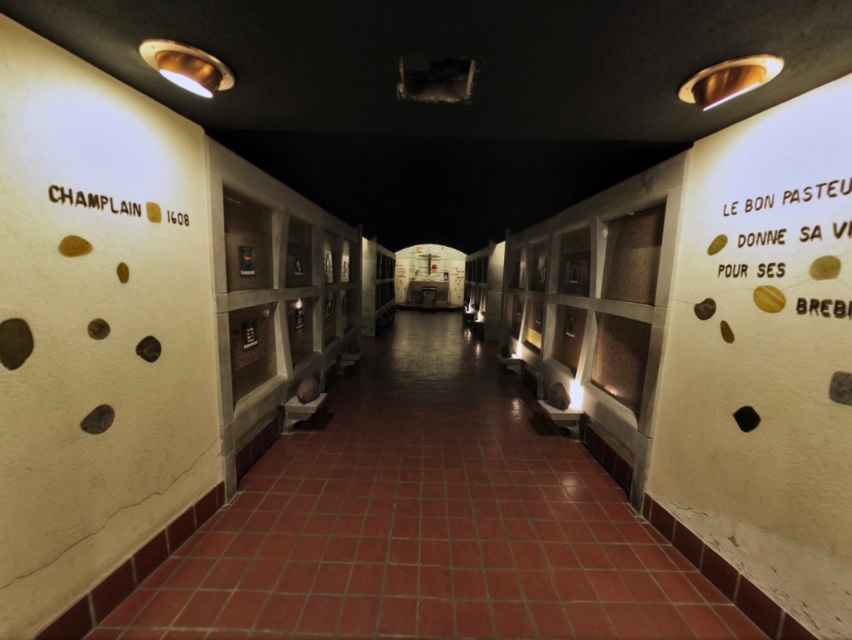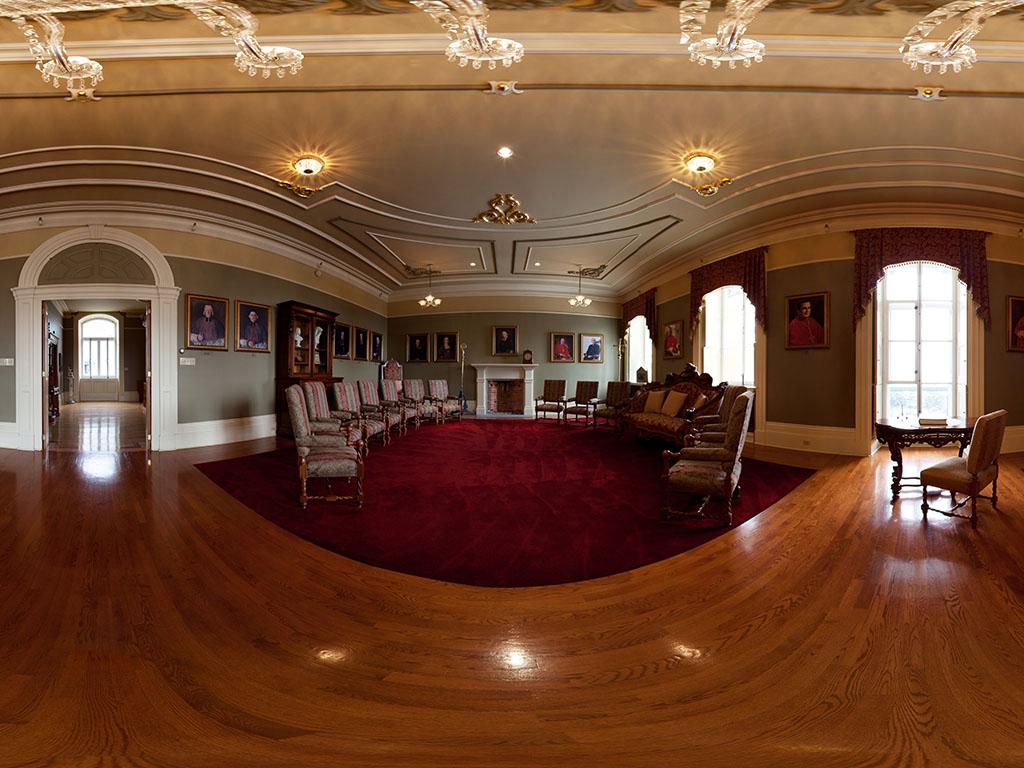The First Parish Church of New France
Notre-Dame-de-Québec has served the first Catholic parish in North America ever since 1664. It acquired cathedral status in 1674 when it became the seat of the huge Diocese of Québec, and 200 years later, that of a basilica. Its history has been marked by shelling, fires, and multiple reconstructions and renovations. Phoenix-like, it has risen from its ashes and continues to soar.
The cradle of the Catholic Church in Canada
The cathedral-basilica was built on the site of the first chapel constructed by Samuel de Champlain in 1633. After the first building burned down, the Jesuits built another church in 1647, this time in stone. The oldest components of the cathedral-basilica date back to this period.
In 1674 when François de Laval became the head of the Diocese of Québec (which spanned from Québec to the outermost bounds of the Great Lakes and the Mississippi), he chose the little Upper Town church to be a cathedral, making it the seat of the Catholic Church in North America. King Louis XIV bankrolled the first expansion project in the late 17th century. Ten years before the end of the French Regime, major work was done on the church, but the parishioners’ joy was short-lived—the church was destroyed by fire as a result of the shelling that was a prelude to the siege of Québec in 1759.
Enter the Baillairgé family
After the British Conquest, master carpenter Jean Baillairgé was in charge of building an exact replica of the first church, but with the addition of a bell tower on the south side, the taller of the two towers. In the decades that followed, three generations of Baillairgés—Jean, his son François, and his grandson Thomas—assisted by John Cannon, painstakingly worked on the ornate interior decor that was completed in 1828. Thomas Baillairgé also designed and supervised the construction of a new façade in 1843.
Thomas’s initial plans called for two identical bell towers, but the foundations would not have supported their weight and so it was back to the drawing board. There would only be one tower—without bells—on the north side. The bell tower designed by his grandfather was spared. The resulting asymmetry was not in the Neoclassical style that Thomas Baillairgé had been aiming for, but it gave the church its unique character.
The rebirth of a historic building
In the late 19th century, a number of improvements were made to the cathedral-cum-basilica by four other architects. But on December 22, 1922, the building burned to the ground. All that remained were the charred walls. For the next seven years, the building and its interior would be put back together, stone by stone, based on photographs and the original architectural plans. Thanks to this remarkable feat, today visitors see an exact replica of the work of the Baillairgés from the early 19th century.
The centrepiece of the interior decor is the imposing gold-leaf canopy overhanging the choir and supported by sculpted angels. Other treasures include the sanctuary lamp—a gift from Louis XIV—the stained glass imported from Munich and Paris, and the magnificent organ from the prestigious House of Casavant.
A place of eternal rest
In the 1990s a funerary chapel was added to the cathedra-basilica for the remains of Monseigneur François de Laval, the founding father of the Catholic Church in Canada, beatified by Pope John Paul II in 1980. Upon his tomb is a recumbent statue in bronze outlining his features.
There are more than 900 tombs in the crypt, including those of Québec bishops and archbishops, Thomas Baillairgé, and four governors of New France. The holy grail of archeologists has long been finding Champlain’s tomb, thought to be on the site of the first chapel, but no one has yet to do so.
The future of this invaluable living relic
Notre-Dame-de-Québec Cathedral-Basilica is a living place of worship whose historical value is proudly on display. The ceremonies, concerts, pilgrimages, and other activities planned for the church’s 350th anniversary in 2014 attest to its significance.
Related medias
Virtual tours

The crypt is located in the middle of the foundations of the first church built in 1647. It is the final resting place of four governors of New France, bishops, archbishops, and other notable figures, including the some of the colony’s first pioneers, and perhaps even Samuel de Champlain himself.

This “grand bishop’s” room features portraits of the archbishops of Québec.
Old pictures